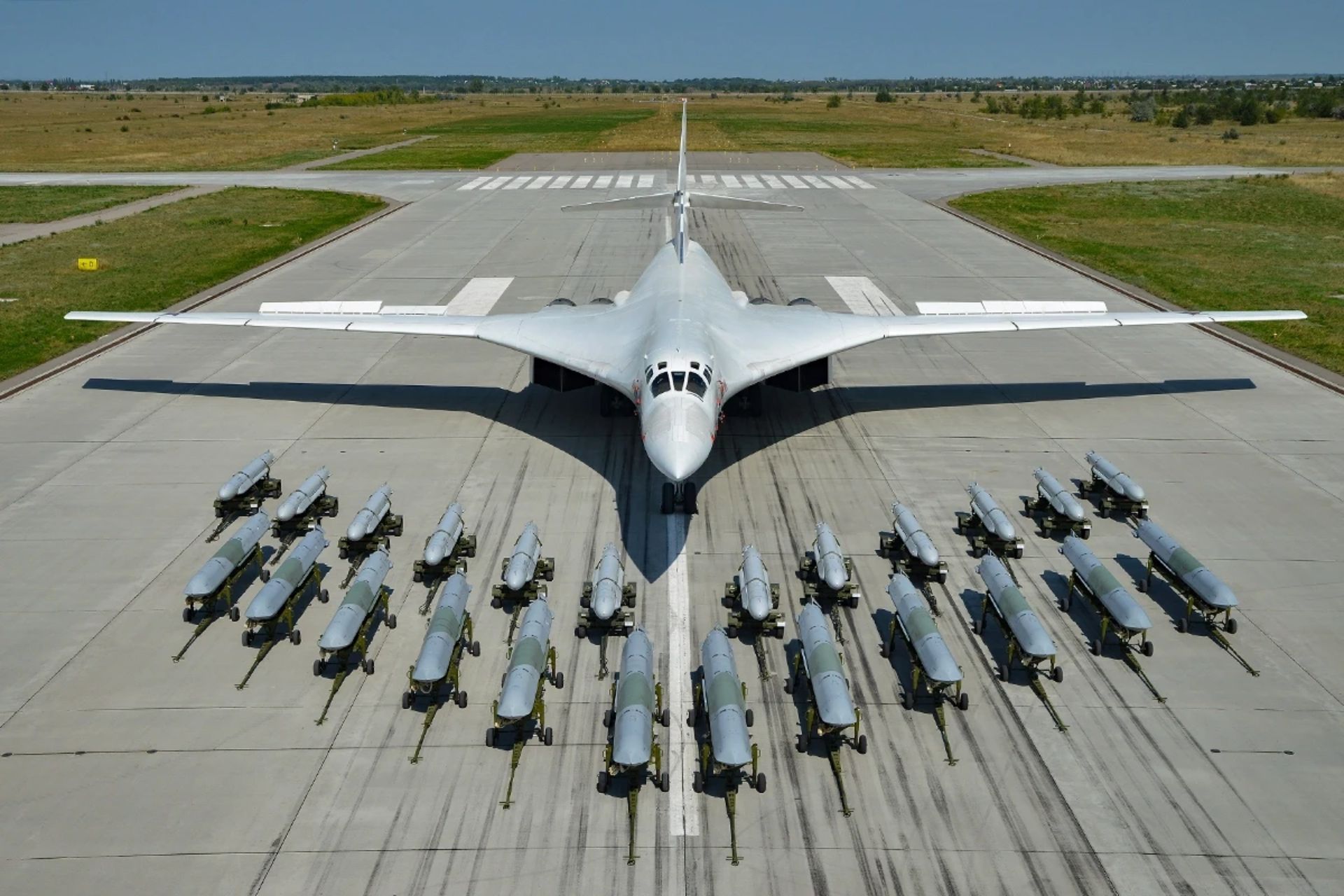Breaking news
Russia starts using new variant Kh-101 cruise missile with upgraded warhead lower range.
Russia has enhanced what many consider its best cruise missile by nearly doubling the size of its nuclear warhead to improve its effectiveness against buildings. This was revealed by Ukrainian military media on Thursday, May 9, following the examination of recovered missile debris
Follow Army Recognition on Google News at this link

A Russian Tu-160 (NATO: BLACKJACK) naval bomber with payload - 12 Kh-101 or Kh-55 missiles. (Picture source: Russian MoD)
The Kh-101 cruise missile (NATO: AS-23 Kodiak) is considered the premier long-range strike weapon of the Russian Federation, capable of being equipped with either a conventional or nuclear warhead. The 6-meter-long missile flies at treetop level at speeds of 700 to 900 km/h, designed to evade air defenses using programmable flight paths over ranges up to 3,000 km. The missile has been extensively used by Moscow's forces in Ukraine and Syria, alongside the Soviet-era Kh-55 missile.
Open sources channels first reported in April the use of an enhanced Kh-101 missile with a more powerful warhead. Official Ukrainian sources reported the use of the new version of the Kh-101 among 17 missiles from the Kh series that attacked civilian infrastructure on May 8. The Ukrainian newspaper Defence Express reported that debris from a downed Kh-101 had been recovered in a farmer's field, providing military researchers their first opportunity to examine the missile's latest enhancements. ET reported that modifications to the Kh-101 included a new tandem warhead that added a secondary explosive payload of 350 kg to the standard 450 kg. nuclear warhead, thus doubling its destructive capacity. Neither warhead exploded after the missile was shot down, according to the report.
The payload increase was achieved by reducing the size of the fuel tank, which, according to the examination of the debris, may have more than halved its operational range from about 5,500 kilometers to 2,250 kilometers.
According to other open source reports, enhancements might include flare launchers to decoy heat-seeking weapons targeting the missile, strengthened electronics to resist jamming, more sophisticated optics on a modernized gimbal, and improved streamlining, although recent media images and reports have not shed light on these possible improvements. An image of a serial number on the recovered missile indicated it had been manufactured in the second quarter of 2024 and was likely deployed almost directly from the factory. Defence Express confirmed that the serial number came from a Kh-101 missile but was unable to confirm other details.
In a daily briefing on the situation, the British Ministry of Defence also confirmed details of the enhancements made to the Kh-101 cruise missile used in Ukraine, including its more powerful warhead. They highlight modifications, upgrade of warhead and reduction of range
Russian military blogger Voin DV stated that the dual warhead would be particularly effective in the Kremlin's current campaign targeting Ukraine's energy and heating infrastructure, as well as against airfields that will operate American-made F-16 fighter jets expected to arrive in Ukraine in May or June.
According to the pro-Russian channels on Telegram the new dual-module warhead with an 800 kg high-explosive warhead will allow for multiplied impact, especially in cases where we are talking about Ukrainian energy or industrial facilities Much more critical damage will be inflicted on major railway junctions, bridges, and the outer junctions of bunkers, where the Ukrainian armed forces plan to deploy F-16AM fighters received from the West in the future. The message continued by asserting that Kh-101 strikes would also be effective against Western arms deliveries to Ukraine, particularly against the Beskyd Tunnel in the Carpathian region of western Ukraine, using either a conventional or a thermonuclear warhead.


























